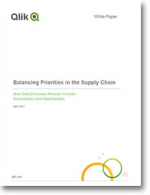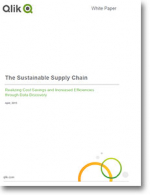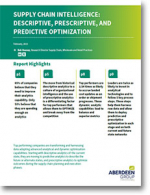Balancing Priorities in the Supply Chain
This paper demonstrates how Data Discovery software helps generate insight and provides decision-makers with increased visibility to help identify risks and opportunities.
Inventory, distribution, production, procurement and transportation are some of the key costs that exist in the supply chain.
Being able to minimize them is a recognized competitive advantage, and one that best-in-class companies regularly use to generate a competitive edge.
Take the case of Ikea – its ‘Bang’ mug has been redesigned many times to realize shipping cost savings.
Originally, 864 mugs would fit into a pallet; after redesign a pallet held 1,280 mugs. With a further redesign 2,024 mugs could be held.
This act of packaging ingenuity and attention to detail reduced its shipping costs by 60%.
Increasingly businesses need to be able to measure the true cost to serve for each and every order.
This capability will allow better negotiation and value creation across the supply chain. Supply chain professionals need to master the deeply interdependent networks to be able to say “yes” to profitable orders and “no” to the impossible.
Supply Chains are becoming more extended and complex with a consequent increase in risk and the need for resilience. Ensuring continuity and quality of supply over extended periods with increasing market volatility and competition for resources is essential.
Often, the markets with the highest growth potential are also the most risky in which to operate.
Globalization and emerging markets have led to increased competition in many industries and raised questions on optimal organizational and supply chain network design. These competitive dynamics drive further pressure on costs and profitability.
New technologies lead to new frontiers in supply chain transparency and process automation.
These enable multiple supply chain partners along the value chain to seamlessly interact in the joint design, manufacture, delivery and service of complex customer orders.
3D printing could have a huge impact on supply chain as it cuts out warehousing, transportation, and production.
The Internet of Things (IoT) has the potential to increase operational efficiency and better integrate the organization. IoT is important as a way to know what’s happening in the physical supply chain, from smart shelves in store self-provisioning capital equipment.
A recent IDC survey of 355 U.S. based manufacturers identified the importance of cost reduction as the number one supply chain priority.
Against a backdrop of economic contraction, declining margins and rising energy costs, it is no great surprise that it came out on top. However, what was revealing was that other priorities such as improving product/safety and overall customer service also scored highly as well.
These goals would stand to be potential casualties in the wake of cost cutting initiatives; so there exists a likely conflict of priorities.
What’s Related




Favorites





